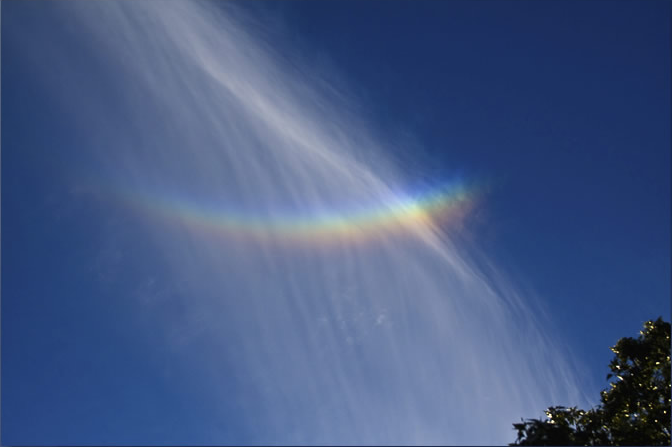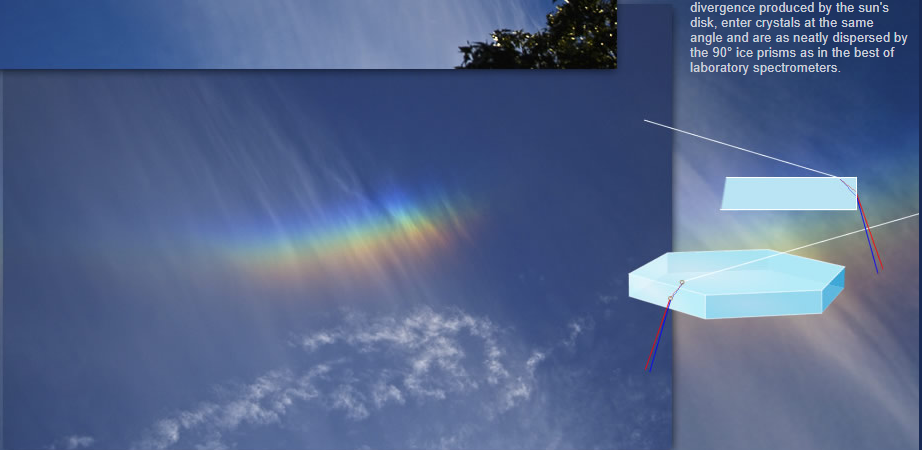Perth Australia Circumzenithal Arc
The Enchanting Phenomenon of the Perth Australia Circumzenithal Arc
Have you ever gazed up at the sky and been captivated by the beauty of a rainbow? Well, prepare to be amazed because nature has another trick up its sleeve - the Perth Australia Circumzenithal Arc. This ethereal spectacle, also known as an "upside-down rainbow" or a "smile in the sky," is a rare atmospheric phenomenon that graces the skies of Perth, Western Australia.
The Circumzenithal Arc is a celestial phenomenon that occurs when sunlight interacts with ice crystals suspended in the atmosphere, creating a stunning display of colors. Unlike regular rainbows that form when sunlight is refracted and reflected by raindrops, circumzenithal arcs are formed by the refraction and reflection of light through ice crystals found in cirrus clouds.
One of the remarkable aspects of circumzenithal arcs is their ever-changing nature. These ethereal beasts can transform from one second to the next as the cirrus clouds that give birth to them move rapidly overhead. In fact, their colors are the purest among all halos, making them a sight to behold.
To understand why circumzenithal arcs exhibit such vibrant colors, it's essential to delve into the science behind their formation. Unlike 22° halos and sundogs, which are minimum deviation arcs formed by crystals in various rotational positions, the rays of the circumzenithal arc enter ice crystals at the same angle. This uniform entry angle allows for neat dispersion of light by the 90° ice prisms, similar to what one would observe in a high-quality laboratory spectrometer.
The result is a breathtaking display of vivid colors spanning the sky. The circumzenithal arc typically exhibits a range of hues, including vibrant reds, oranges, yellows, greens, and blues. These hues blend seamlessly together, creating a mesmerizing gradient that seems to defy the laws of nature.
While the Perth Australia Circumzenithal Arc is undoubtedly a sight to behold, it is important to note that this phenomenon is not exclusive to Perth. In fact, circumzenithal arcs can occur in any location where cirrus clouds are present and the sun is at a specific elevation angle. However, due to its unique geographical location and weather patterns, Perth offers a higher frequency of sightings compared to other regions.
To increase your chances of witnessing this captivating phenomenon, keep an eye on the sky when cirrus clouds are present. These high-altitude clouds, often wispy and feathery in appearance, provide the perfect canvas for the formation of circumzenithal arcs. Remember, patience is key, as these arcs can appear and disappear rapidly.
In conclusion, the Perth Australia Circumzenithal Arc is a breathtaking atmospheric phenomenon that enchants observers with its vibrant colors and ever-changing nature. As sunlight interacts with ice crystals in cirrus clouds, a kaleidoscope of hues fills the sky, creating a sight that is both magical and awe-inspiring. So, next time you find yourself gazing upwards, keep an eye out for this elusive smile in the sky - it may just leave you spellbound.

Circumzenithal Arc, Perth, Western Australia imaged by Graham Watts on 21st December. ©Graham Watts, shown with permission.

"The second pic was taken 2 mins after the first. That band of cirrus was moving through very quickly."
Circumzenithal arcs - 'upside-down rainbows' - 'smiles in the sky' are ethereal beasts often changing from second to second as the cirrus that makes them moves at its fastest when overhead.
Their colours are the purest of the halos. Those of 22° halos and sundogs overlap and smudge because those halos are minimum deviation arcs formed by crystals in many rotational positions. In contrast, the rays of the circumzenithal arc, but for a slight divergence produced by the sun's disk, enter crystals at the same angle and are as neatly dispersed by the 90° ice prisms as in the best of laboratory spectrometers.
Note: this article has been automatically converted from the old site and may not appear as intended. You can find the original article here.
Reference Atmospheric Optics
If you use any of the definitions, information, or data presented on Atmospheric Optics, please copy the link or reference below to properly credit us as the reference source. Thank you!
-
<a href="https://atoptics.co.uk/blog/perth-australia-circumzenithal-arc/">Perth Australia Circumzenithal Arc</a>
-
"Perth Australia Circumzenithal Arc". Atmospheric Optics. Accessed on November 23, 2024. https://atoptics.co.uk/blog/perth-australia-circumzenithal-arc/.
-
"Perth Australia Circumzenithal Arc". Atmospheric Optics, https://atoptics.co.uk/blog/perth-australia-circumzenithal-arc/. Accessed 23 November, 2024
-
Perth Australia Circumzenithal Arc. Atmospheric Optics. Retrieved from https://atoptics.co.uk/blog/perth-australia-circumzenithal-arc/.